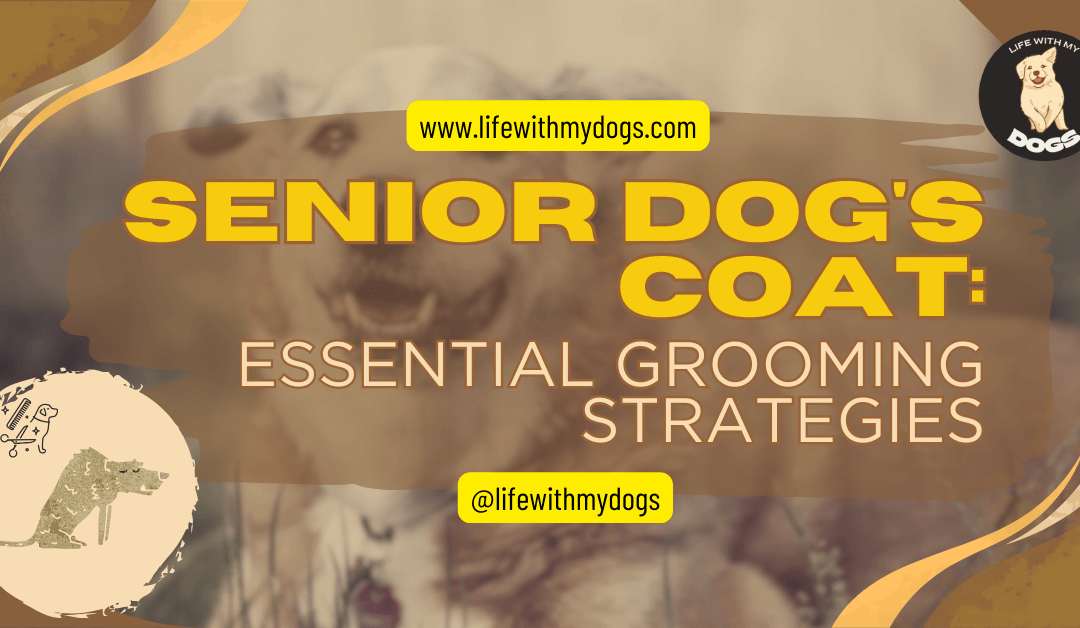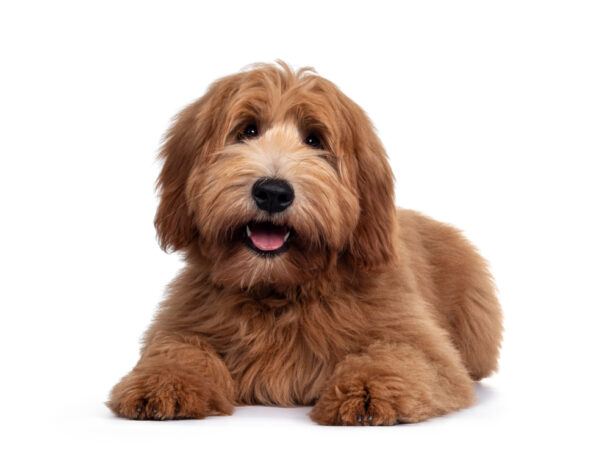LifeWithMyDogs is supported by our audience. When you purchase through one of our links, we may earn a small affiliate commission. As an Amazon Associate I earn from qualifying purchases. Your cost is not affected.
**********
Caring for our senior dog’s coat fills me with responsibility and pride. With their colors fading and texture changes, it serves as a gentle reminder of my furry friend’s advancing age and the precious moments we’ve shared together. However, caring for them goes beyond physical appearance; it’s about prioritizing their health and comfort as they gracefully navigate their later years.
Considering the essential grooming strategies and the use of the right tools and techniques, we ensure that our senior dog’s coat shines brightly, just like they do in our lives. It’s a small yet significant way to show them the care and appreciation they deserve for being such cherished members of our family.
Senior Dog’s Coat Maintenance: Specific Needs And Challenges
Senior dog’s coats often undergo significant changes. I’ll explain everything from texture alterations to differences in growth patterns. It’s not uncommon for a senior dog’s fur to become coarser or thinner, and many experience a change in color. Don’t worry too much about these changes; they’re a natural part of the aging process.
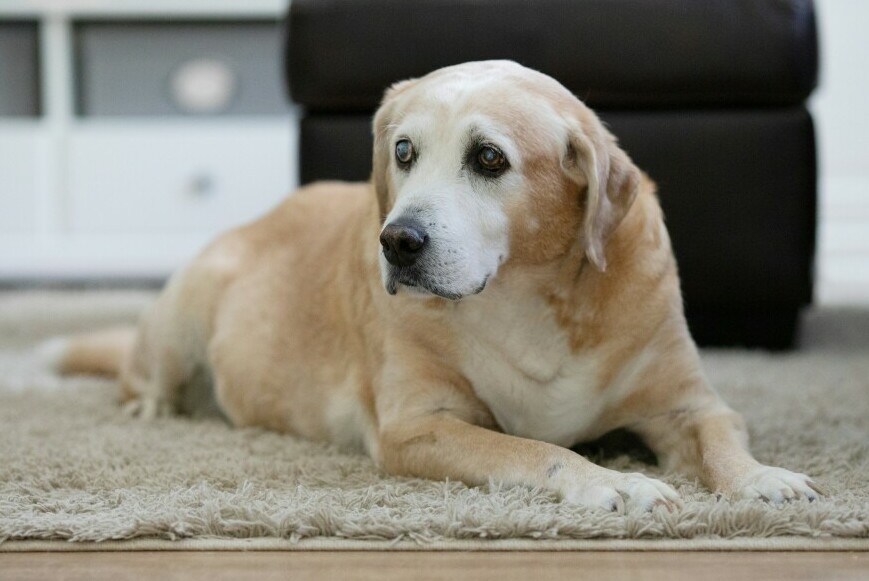
Why is regular grooming for older dogs so crucial? It’s simple. Proper grooming keeps their skin healthy, ensures better circulation, and helps you spot any skin conditions early. It’s also an excellent way to give your senior pooch extra love and attention, which they deserve at their age.
Understanding these needs isn’t just about aesthetics; it’s also about maintaining your furry friend’s comfort and well-being. Younger dogs may bounce back quickly from a missed grooming session, but senior dogs require more consistency. Their skin can be more sensitive and prone to issues if not cared for properly. Choose something that resonates with you and your pet’s routine, ensuring it’s gentle and appropriate for their age.
That will include tweaks to the grooming regimen as your dog ages. In the next section, ‘Grooming Techniques for Senior Dogs,’ we’ll talk about how you can adjust bathing routines, pick out the right tools that are kind to older skin, and master gentle brushing methods that avoid causing your pet any discomfort.
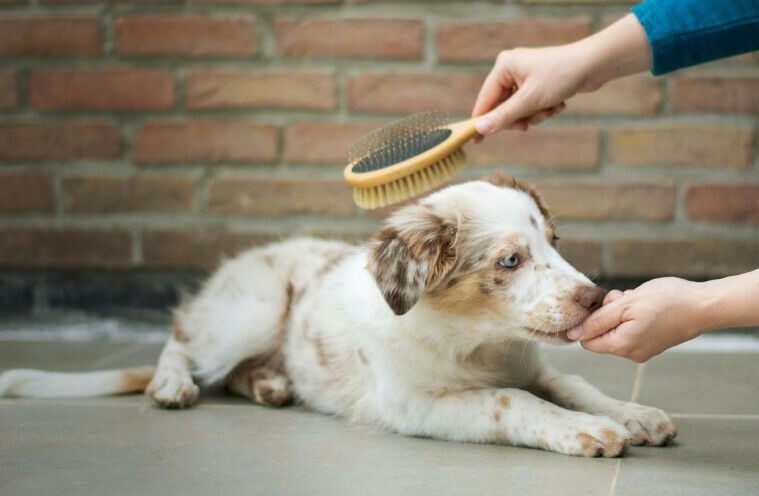
Paws-itively Essential Takeaways for Senior Dog Care:
- Senior dogs naturally experience coat changes, including texture and color variations.
- Adapt grooming techniques, use gentle methods, and schedule regular vet check-ups.
- Provide proper nutrition, professional care, and love for a comfortable senior life.
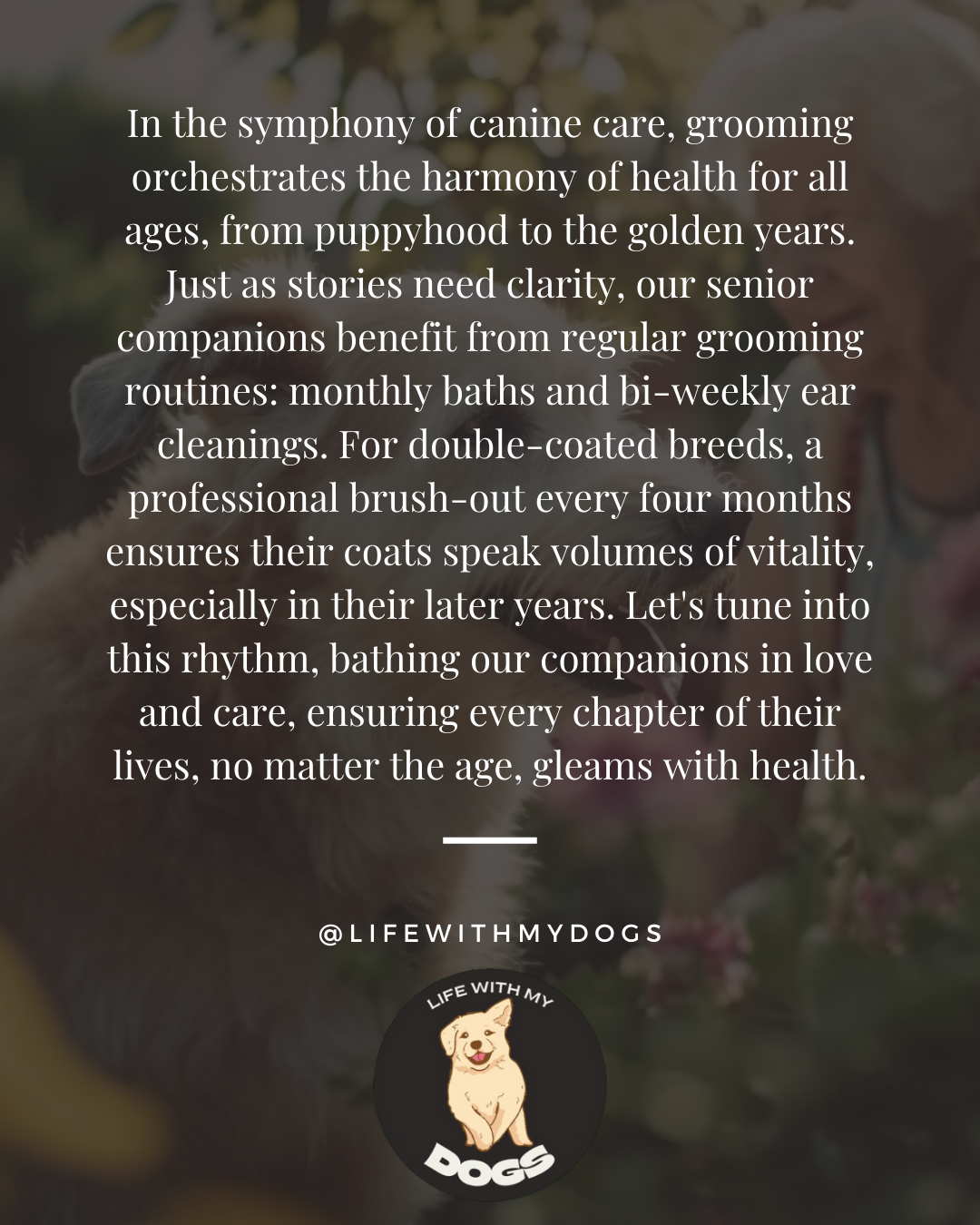
Grooming Techniques for Senior Dogs
We must adapt our grooming techniques to suit the evolving needs of our furry companion’s age. I will explore how you can adjust your approach to keep your senior dog comfortable and their coat in the best possible condition. That will include everything from tweaking the bathing routine to selecting the most suitable grooming tools.

Bathing
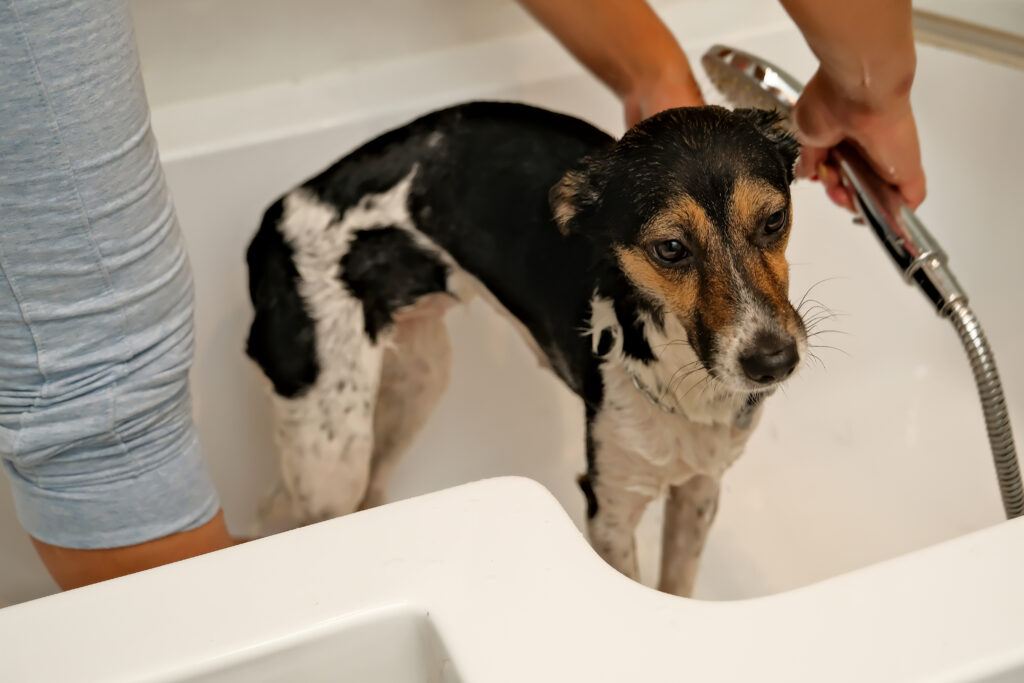
First, let’s talk about bathing. Bathing a senior dog isn’t just about keeping it clean; it’s also about ensuring its skin remains healthy without causing it any stress or discomfort. Monitor your dog’s reaction and adjust as needed, especially the water temperature. The bathing experience should be positive for both of you.
Elderly dogs generally only need frequent baths if they get particularly dirty. Bathing them too often can strip their skin of natural oils, leading to dryness and irritation. Avoid using harsh chemicals or strong fragrances that can irritate their skin. Additionally, I’ll share my top choices for gentle, moisturizing shampoos that cater to the delicate skin of older dogs.
Grooming Tools
Choosing the right grooming tools is another piece of the puzzle. What worked for your dog during their younger years might not be the best fit now. For instance, brushes with softer bristles can be kinder to a senior dog’s sensitive skin. Similarly, I’m here to help you understand why nail care is more critical than ever with older dogs, as overgrown nails can lead to discomfort and mobility issues.
Gentle Grooming
Video Credit: @PawsRelax
Lastly, the actual act of grooming needs to be gentle. This isn’t just about going slow; it’s also about recognizing signs of discomfort and knowing when to give your dog a break. It’s essential to turn grooming sessions into positive experiences filled with praise and treats, making it stress-free for both you and your dog.
Having established the appropriate grooming regimen, it’s imperative to recognize the unique coat challenges frequently encountered by senior dogs. You can constantly adjust your approach, but being proactive about issues such as thinning hair and skin infections is vital. Choose something that resonates with you and your dog’s needs, and you’re bound to make grooming a bonding experience that keeps your senior pet’s coat gleaming.
Dealing with Common Senior Dog’s Coat Issues
Video Credit: @LittlePawsTraining
As your dog ages, its coat can start showing signs of age, much like that of its human counterparts. Thinning hair and bald spots become more common, but there are ways to manage these changes proactively.
Thinning Hair
Thinning hair in senior dogs can be due to various factors, ranging from hormonal imbalances to nutritional deficiencies. This isn’t just about aesthetics; it’s also about your dog’s comfort and health. Make sure you’re monitoring their coat condition closely and adjusting their care routine as needed.
Skin Infections
Skin infections can be more prevalent in older dogs whose immune systems aren’t what they used to be. You’ll want to be on the lookout for any signs of redness, swelling, or discharge. If you want to prevent these issues, maintaining a clean and dry coat is crucial. A quick consult with your vet is recommended at the first sign of skin troubles.
Matting and Tangling
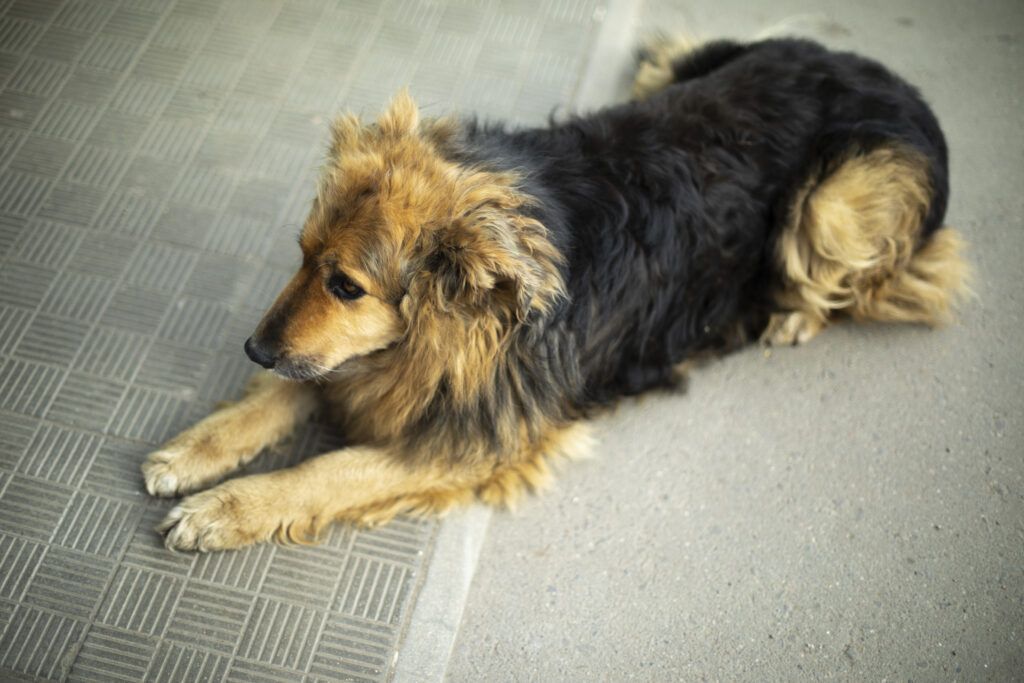
Matting and tangling can cause severe discomfort for your less mobile senior pet. To prevent painful mats, frequent gentle brushing, and regular trims are key. If you do find a mat, don’t worry too much about getting it out on your own. Sometimes, it’s best to leave it to the professionals to avoid hurting your dog’s sensitive skin.
You might wonder how diet plays into this. Believe it or not, what your senior dog eats greatly impacts their coat health. So, let’s talk about how proper nutrition can help maintain a shiny, healthy coat, even in your dog’s golden years.
Diet and Nutrition for a Healthy Senior Dog’s Coat
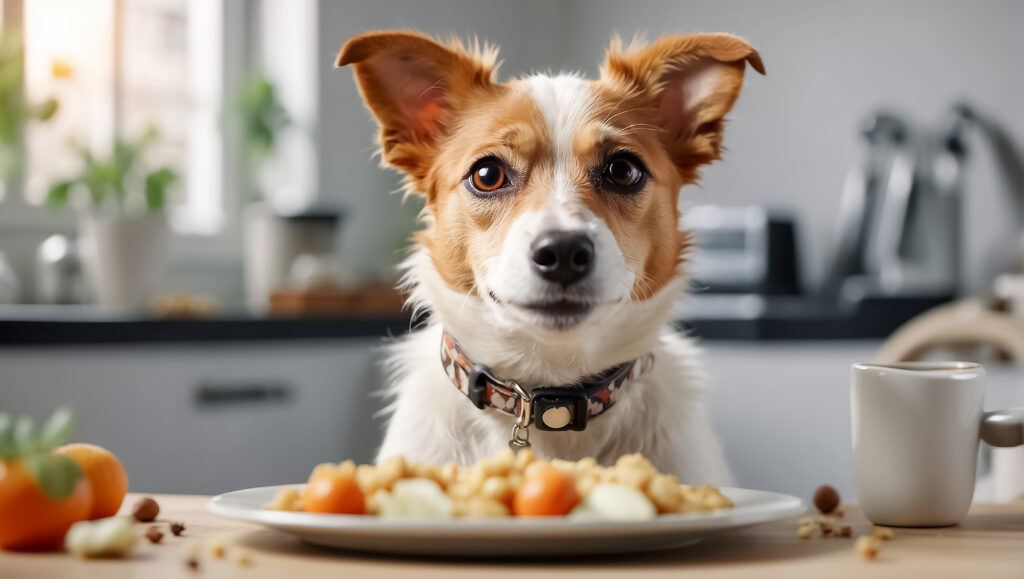
A shiny and healthy coat isn’t just a matter of grooming; it’s also about what your senior dog eats. Let’s talk about the significant impact diet has on coat health. The dietary needs of senior dogs change, and so does the condition of their coat. Their bodies may not be as efficient at absorbing nutrients, leading to dullness and increased shedding.
Feeding your senior dog a balanced diet tailored to their age-related requirements is crucial. High-quality senior dog food often contains a careful blend of essential fatty acids, like omega-3 and omega-6, which are fantastic for skin and coat health. If you’re unsure about the best diet for your dog, I recommend discussing this with your vet for personalized advice.
Supplements can be a game-changer, too. Incorporating fish oil or flaxseed oil supplements into your dog’s diet can provide a boost to their coat condition. Plus, these supplements have the added benefit of supporting joint health, which is essential for senior dogs.
It’s also worth noting that your dog’s appetite and digestive system might slow down with age. You might need to adjust their food intake accordingly to avoid weight gain while ensuring they’re still getting the nutrients they need. Small, frequent meals can be easier for them to handle, allowing for better nutrient absorption.
But diet is just one piece of the puzzle. Professional care is also invaluable for maintaining your senior dog’s coat health. Keep reading to find out when it’s time to call in the pros and how regular vet visits play a role in keeping your old friend looking and feeling their best.
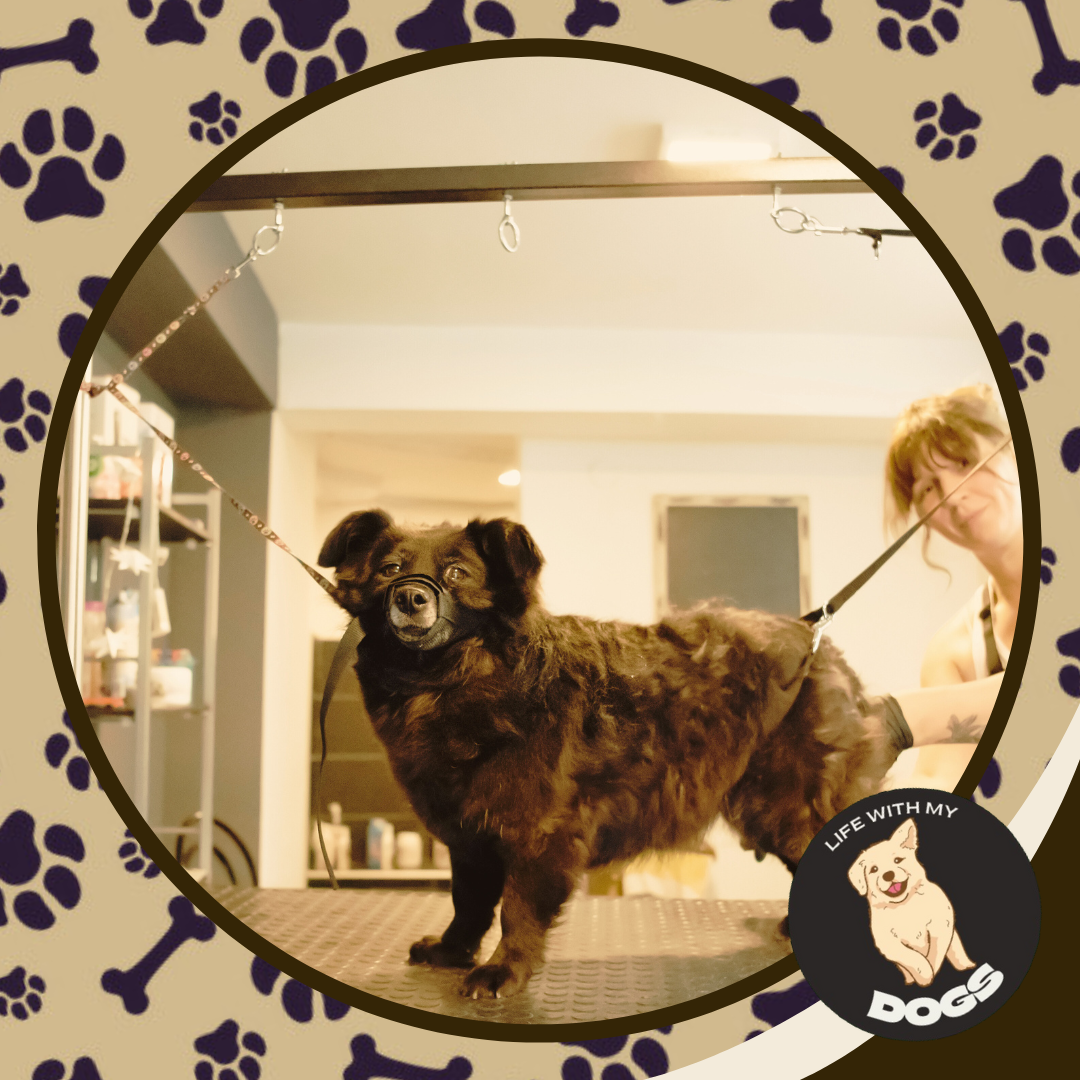
Fun Fact:
Bobi, a male purebred Rafeiro do Alentejo from Portugal, is the first dog on record to reach 30 years. His longevity is attributed to a calm, peaceful environment and consumption of fresh food.
Professional Care and Veterinary Support
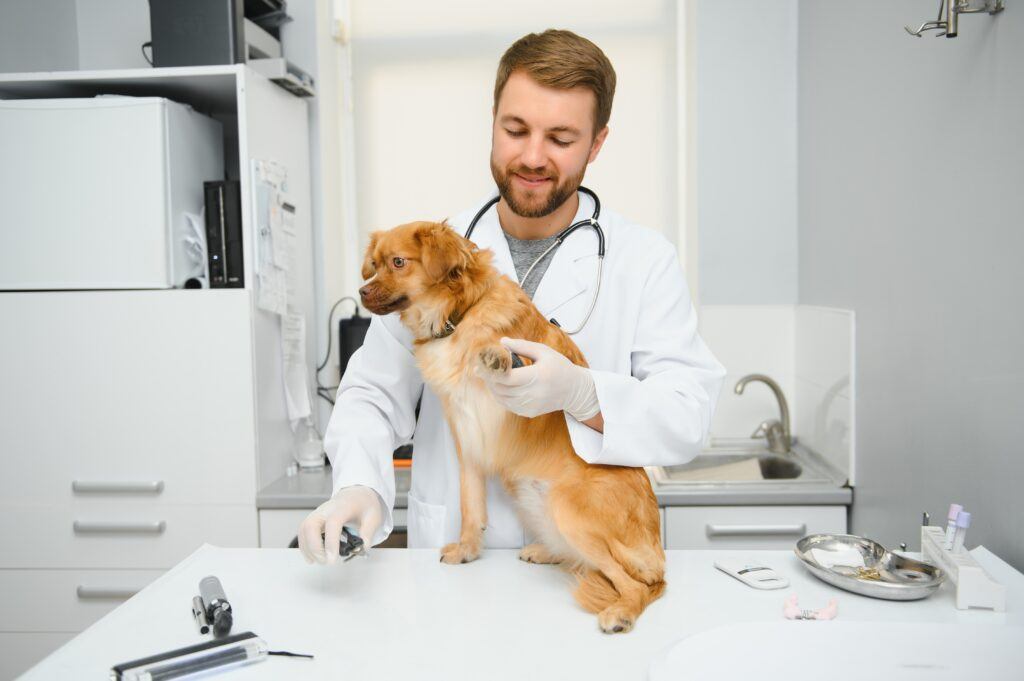
As your dog enters the golden years, professional care becomes increasingly important. It’s not just about keeping them looking good; it’s about their health and comfort. A professional groomer with experience in senior dogs can be a godsend. They have the knack for handling your old buddy with the care they need, spotting issues you might miss.
Don’t forget about the vet, though. Your furry friend should regularly see the veterinarian to check skin and coat health. These visits are about more than shots and ‘how’s the tail wagging?’ It’s during these check-ups that your vet can spot early signs of skin conditions or nutritional deficiencies. Plus, if your senior dog’s coat issues stem from an underlying health problem, your vet will work with you to treat it.
Sometimes, despite the best diet and home grooming, a senior dog might need medical intervention. Hormone imbalances, arthritis, or other age-related conditions can affect their coat. But with your vet’s help, treatments and medications can often make a significant difference.
Remember, caring for your senior dog’s coat isn’t just a chore; it’s a way of showing love and ensuring their golden years are comfortable and happy. Keep up with professional grooming and vet care, and you’ll be doing everything you can to keep your pal’s coat in the best possible shape.
Fundamental Insights:
- Elderly dogs often undergo significant changes, including alterations in texture, thinning, and changes in color. These changes are a natural part of aging and shouldn’t cause undue concern.
- Grooming techniques need to be adjusted as dogs age to accommodate their evolving needs. This includes adjusting bathing routines, selecting gentle grooming tools, and mastering gentle brushing methods to avoid discomfort.
- Diet plays a significant role in maintaining a senior dog’s coat health. High-quality senior dog food containing essential fatty acids can promote skin and coat health, while supplements like fish oil or flaxseed oil can provide additional benefits.
- Groomers and vets can provide specialized care tailored to the needs of older dogs, spot early signs of health issues, and offer treatments or medications if necessary to keep your senior pet comfortable and happy.
Video Credit: @OurPetsHealth
Senior Dog’s Coat and the Care That They Deserve
With our beloved loyal companions aging, it’s crucial to adapt our grooming techniques and care routines to suit their evolving needs. By understanding their changes, we must learn to ensure that they get the care they deserve.
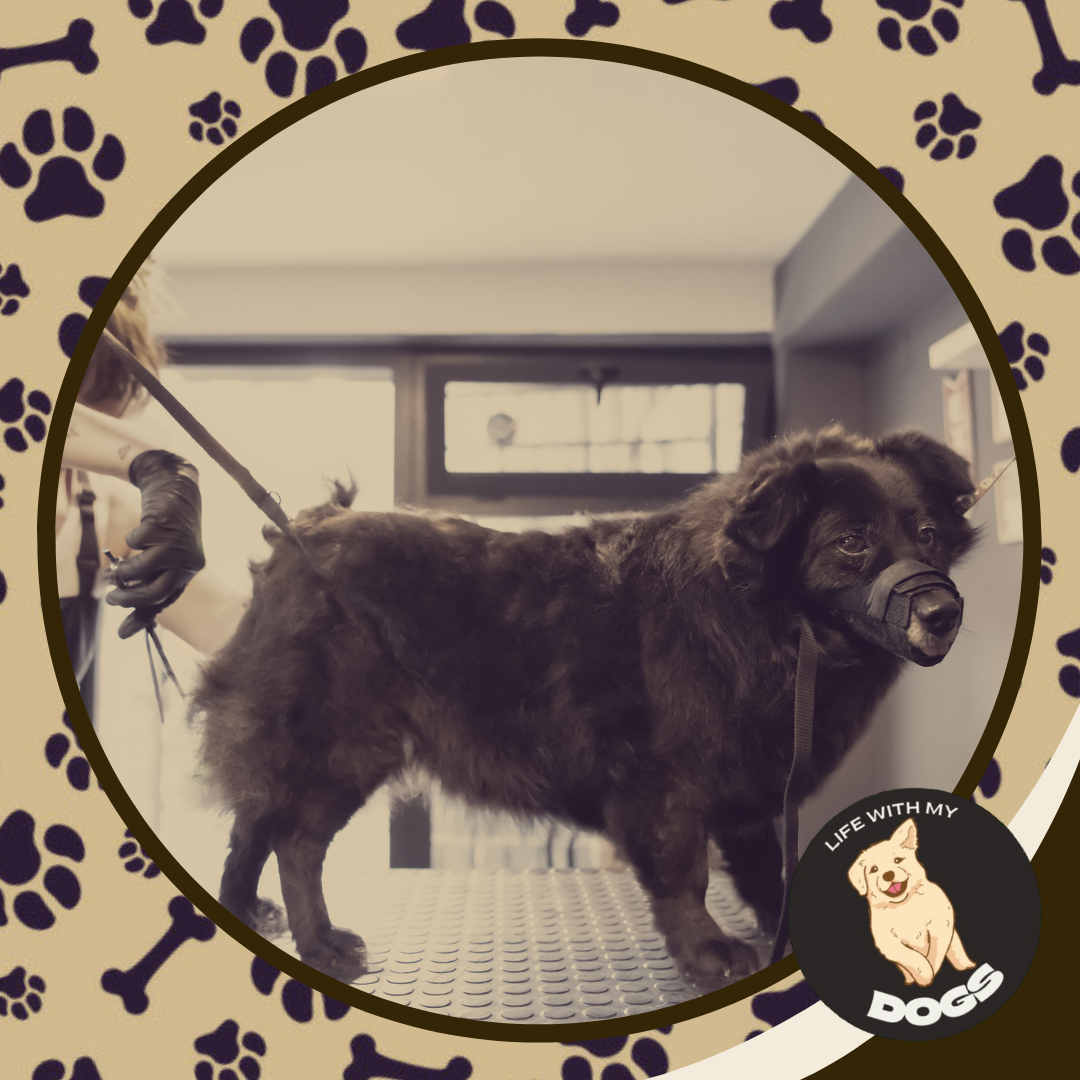
Take proactive steps to adjust your senior dog’s grooming routine, including gentle bathing techniques, appropriate grooming tools, and regular veterinary check-ups. By offering our love and attention, we can ensure that their senior years are as comfortable, memorable, and enjoyable as possible.
Frequently Asked Questions
Whether you are new to taking care of a senior dog or a seasoned fur parent, we’ll explore common inquiries about senior dogs’ coats, providing practical advice and insights to assist pet owners in ensuring their furry companions remain comfortable and healthy as they age.
Why is my senior dog's coat becoming thinner?
Senior dog’s coat may thin due to hormonal changes, nutritional deficiencies, or underlying health conditions. Consulting with a veterinarian can help identify the cause and determine appropriate treatment.
How often should I groom my senior dog?
Grooming frequency for senior dogs varies depending on their coat type and overall health. Generally, regular brushing to prevent matting and remove loose hair is recommended, while bathing should be done as needed to avoid drying out the skin.
Are there specific grooming products I should use for my senior dog's coat?
Elderly dogs may benefit from using gentle, moisturizing shampoos and conditioners specifically formulated for aging skin. Additionally, softer-bristled brushes can be gentler on their sensitive skin, helping to maintain coat health without causing discomfort.
My senior dog's coat has become dull and dry. What can I do to improve its condition?
Ensuring your senior dog receives a balanced diet rich in essential fatty acids can promote coat health from the inside out. Additionally, using moisturizing grooming products, providing regular brushing to stimulate circulation, and scheduling regular veterinary check-ups can help address dryness and dullness in their coat.

